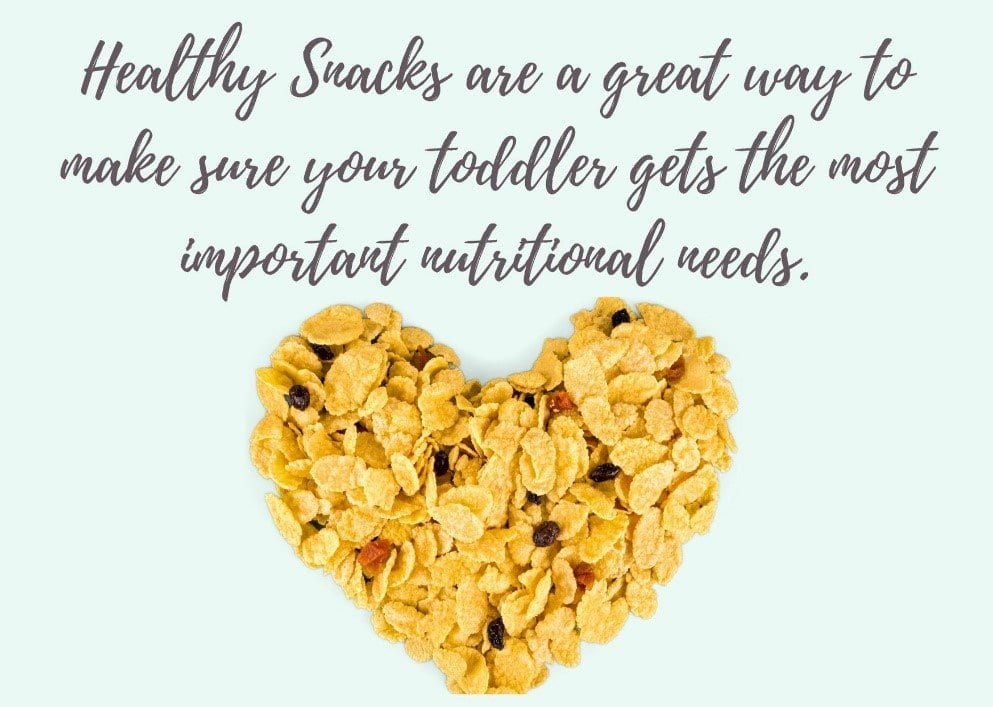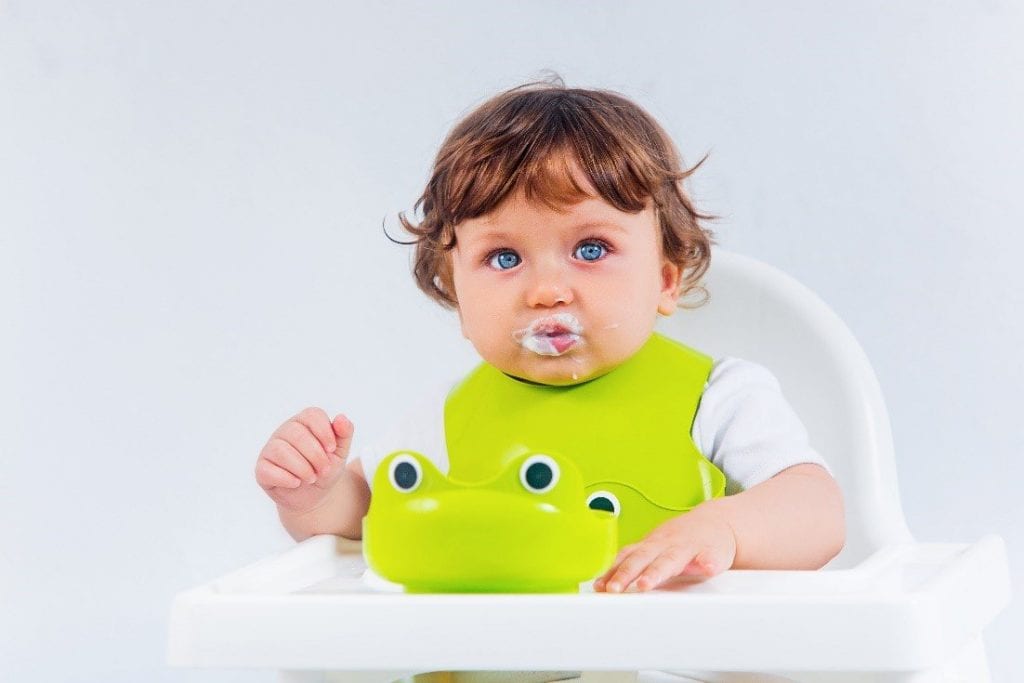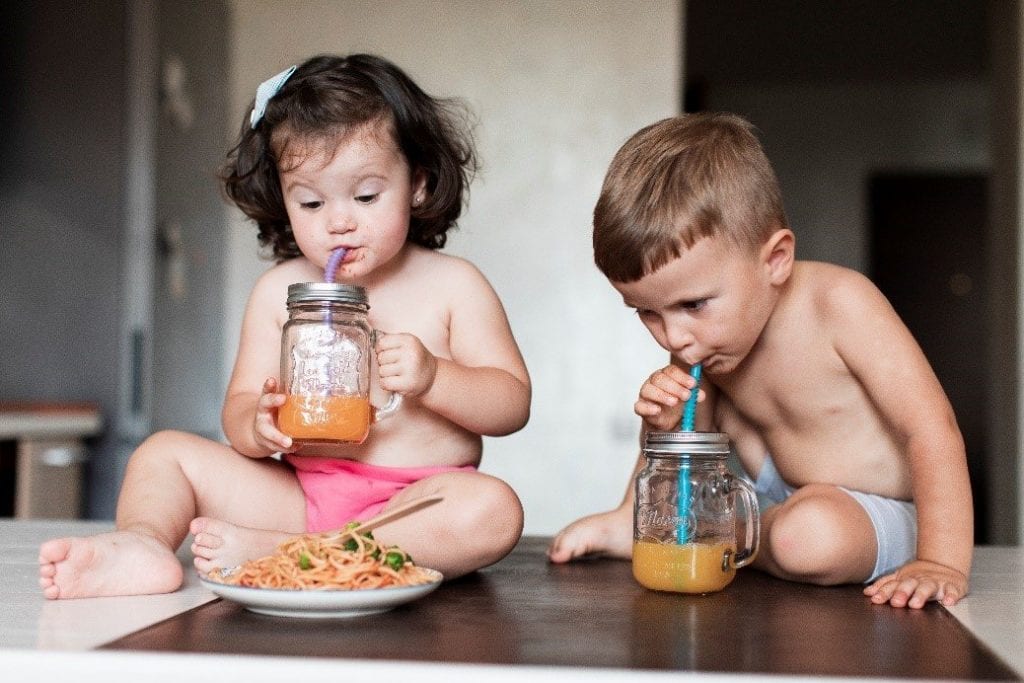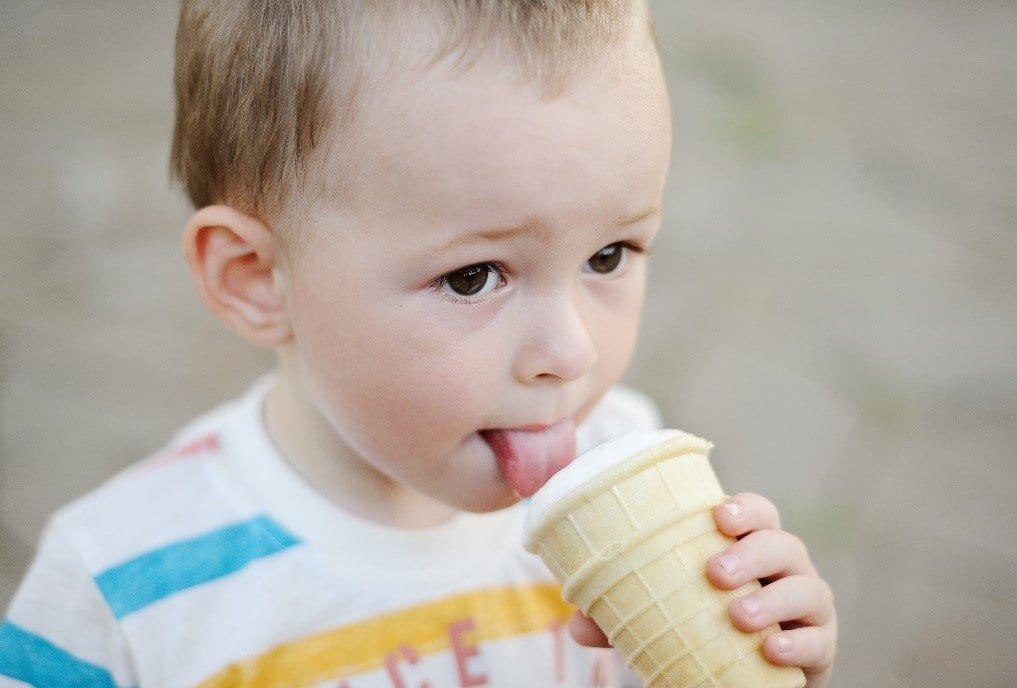
Toddlers who are taught to eat healthy snacks will take these habits with them as they grow older. Start ‘em young! Read on to learn about how you can teach your littlest ones to snack healthy.
Time flies, right? It doesn’t seem so long ago when you gave birth to a tiny newborn and discovering the magic of being a new, freshly-minted parent. Fast forward to 12 months later, you now have a baby that’s just celebrated her first year on earth and heading off to toddlerhood.
The toddler years are among the best times for children. Not quite young babies but not quite young kids, as well, toddlers are the “in-betweeners” of babyhood. At this age, they are testing their independence, learning to talk and interact with everyone around them and they’re also exploring different tastes and textures of food, as well.
And speaking of food – since toddlers develop at an incredibly rapid pace, they need all the good energy that nutritious food can give them. Pretty soon, milk alone and one meal a day won’t be enough to sustain the nutritional needs of a toddler.
To illustrate exactly how many developmental milestones your 12-month old goes through, here’s a quick list:
- Starts taking first steps and may take two or three steps independently.
- Sits without assistance.
- Starts to pull self up to standing position with very little support.
- “Walks” around the house by holding on to any furniture.
- Starts to develop fine motor skills such as using the pincer grasp, puts toy blocks on top of the other, imitates scribbling with a pen, etc.
- Starts to develop more language skills such as responding to “No”, follows simple directions, uses simple gestures such as pointing towards an object, shakes head for “no” or nods head for “yes”, etc.
- Cognitive milestones that include learning the names of animals and other simple objects, learns how to use different household objects correctly like the telephone, drinking from a sippy cup, looking in the mirror or brushing hair, enjoys being read picture books, etc.
- Social and emotional milestones that include preferring to be with parents or familiar people and is shy with strangers, enjoys imitating facial expressions, shows a sense of humor, shows fear and cries due to loud, sudden noises, will start loving to play with other babies of the same age, etc.
There are other milestones, too! Like hitting a one-year old’s goal weight, growing their first set of teeth or getting their first haircut. The first 365 days are simply filled with lots of great firsts to look forward to.
Don’t worry too much, though, if your baby still hasn’t ticked off everything in the above list by their 12th year. Babies progress differently and lots of factors like gender, genetics and their general environment affect a toddler’s overall development. However, if you feel that your baby is delayed in some areas, it’s best to consult with your doctor.
Imagine going through all the developmental milestones that a 12-month old goes through in just a year? We can’t! One thing’s for sure, as parents, we need to keep our little ones as strong and healthy as we possibly can to ensure they grow active and smart.
When we think “healthy”, however, we usually don’t think about snacks because we usually associate snacks with junk food and sugary sweets that are definitely not good for young children. Also, as adults we tend to think that “healthy meals” are full meals with adult-sized servings but this isn’t actually applicable to young children because their tiny tummies can’t handle full servings yet. Parents then will usually wonder, “Is my toddler eating enough food?”.
To answer that question, you should know that…

You can think of it this way – healthy snacks integrated into a toddler’s daily diet is a great way to make sure that your toddler gets all necessary nutrients needed on a day-to-day basis.
But where to start? How do you do it? To answer these questions, we’ve lined up 7 practical suggestions as a guide for you to help you slowly integrate healthy snacks in your toddler’s diet:
1. Set the stage and lead the way to healthy snacking

Babies are naturally inquisitive beings. Their first year of life is mostly spent learning, exploring and discovering. And as parents, we are their first teachers. Almost everything they learn in the first few years of life, they learn from us. Eating habits are no exception.
Since exposure to the “outside world” is minimal during their toddler years, this is a great time for us to influence the way they eat. Toddlers will literally just eat whatever they know is in our kitchen and will learn their eating habits off of you.
However, it can be a huge challenge! Especially when we need to balance work or older children into the picture, sometimes ordering a pizza or a quick take-out is the easiest thing to do. Also, we need our own junk food and chocolate fix too, right?
But with a bit of practice and a lot of determination, stocking up our pantry, cupboards and fridge with healthy options becomes easier over time. Also, just because it’s healthy, doesn’t mean it has to be bland or bitter – there are a lot of delicious kid-friendly and parent-friendly snacks that you can stock up on:
- Yogurt
- Celery with peanut butter
- Healthy trail mix with dried fruit (take the peanuts out if your child is allergic)
- Natural fruit smoothies and shakes
- Banana oatmeal cookies
- Kale chips or sweet potato chips (match that with a healthy dip!)
- Fruit salad – slices of kiwi, watermelon, banana, mango, and papaya
- Carrot sticks or apple slices dipped in creamy hummus
Bottom line:
Stocking up on healthy snacks, serving them regularly at home and eating them is a great way to show healthy eating habits to your baby. Your baby will most likely prefer healthier options as they grew up around healthy food, as well.
2. Stick to a snack routine

Babies generally respond well to a routine. It keeps them calm and reassured knowing what to expect during the day. Keeping a snack routine should help them develop healthy eating habits, as well.
Some moms may ask – when is the best time to start a routing around meals?
According to health experts – as soon as your baby starts with solids, it’s important to start setting a routine straightaway and then slowly incorporate snack time in between meals before your baby becomes old enough to demand for snacks at any time of the day.
For example, you can follow this schedule:
- 7:00 AM – Breakfast
- 9:00 AM – Morning Snacks
- PLAYTIME
- MORNING NAP
- 11:00 – 11:30 AM – Lunch
- AFTERNOON NAP
- PLAYTIME
- 2:00 PM – Afternoon Snacks
- PLAY OUTSIDE, TAKE A WALK (if weather permits)
- 4:00 PM – Late Afternoon Snacks (optional)
- PLAYTIME
- 6:00 PM – Dinner
- BATH TIME
- 7:30 – 8:00 PM – Bedtime
As much as possible, try to stick to this routine every day. If you notice, snack time is followed by active, play time. This ensures that their snack schedule doesn’t immediately follow their actual meal times.
Speaking of schedules, it’s also good to note that not all days are the same. Sometimes you’re out visiting grandma or have an appointment at the doctor’s. It’s understandable that you won’t always be able to stick to the snack schedule, as planned. In these cases, though, packing a quick snack such as carrot slices placed in an airtight container is a better option as opposed to buying sugary or salty pre-packaged snacks.
Bottom line:
Sticking to a snack schedule will allow your baby to look out for hunger cues properly and teach them the sensations of being full and being hungry at the most appropriate times. Remember that a child who is left alone to eat whatever he wants, whenever he wants will have a tendency to either overeat or not eat at all.
3. Make firm rules for sugary snacks

Research shows us that sugar is definitely addictive and you don’t want your little ones to start getting addicted to chocolate or candy at such a young age! Infamously known to give children cavities, upset stomachs, unhealthy blood sugar levels that may lead to childhood diabetes and a host of other health issues – chocolates and candies are definitely not OK for little ones to snack on.
Moms and dads may want to know – when is a good time to introduce sweets to young children?
There is no set time frame given by medical experts but it’s generally advised to delay introduction of sweet and sugary snacks like chocolate and candy (and other junk food) to even as late as 5 or 6 years old. Toddlers are known for their ferocious appetites when they are given something they absolutely love and it’s hard to undo the action of handing them a lollipop today and refusing it tomorrow once it’s done.
Healthy sugars are, of course, good for the body. One best example for a good kind of sugar is honey. Known for its antibacterial properties, honey may be given to children as home remedies to treat cough or sore throat. But doctors warn that children younger than 2 years old should never be given honey. If you want to try introducing honey to your toddler – please always consult your doctor first.
So, what’s the best way to keep your toddler’s hands off chocolates and candy?
It’s recommended for you to create and implement strict sugary food rules at home that must be followed by everyone in the household – yes, that means you too mom and dad! Remember that, as discussed above, it’s your role to set the stage and lead the way to healthy snacking. Instead of candy bars, why not make a snack out of a banana and peanut butter wrapped in a quesadilla? It’s a sweet, delicious and healthy alternative to chocolates and candies.
Bottom line:
Young children should stay away from too much sugars as it can cause various health problems and that means that that the whole family must follow these rules, as well. Stocking up on sweet, healthy and kid-friendly alternatives are better options as opposed to giving out sugary treats.
4. Create small, bite-sized, finger-friendly portions only

Parents usually overestimate the amount of food toddlers need. The reality is that toddlers need smaller portions only.
According to kidshealth.org, “the recommended serving size for a toddler’s snack is actually quite small: ¼ cup (57 grams) dry cereal and ½ cup (118 ml) milk (serve low-fat if your child is over 2 years old) make a fine mid-morning snack, just as a half a banana and ½ cup (118 ml) of milk are great in the mid-afternoon.”
Other than the right nutritional content, it’s important to note of the following important benefits of serving small portions to toddlers:
- Finger-friendly, easy-to-pick-up food encourages independence as toddlers should already start learning to eat by themselves.
- Toddlers make use of the pincer grasp when picking up food by themselves making meal-times a fun and delicious way of strengthening fine motor skills.
Smaller portions also help mom and dad, as well! You’ll always have healthy snacks on the go if you take the time in stocking up sliced fresh fruits and veggies in the fridge. Pop it in a cute, airtight container and you’re all set.
Bottom line:
Giving your toddler just the right portions are not only healthy for their tummies and bodies, it also allows them to explore their independence and develop fine motor skills.
5. Be careful with fruit juice

What’s in a juice box? Lots of sugar, that’s what!
Even if it’s labelled “100% natural”, processed fruit juices oftentimes contain the same caloric and sugar content as a can of soda. But, it’s understandable that sometimes handing a juice box to a whining toddler is the easiest way to get a quiet moment and to keep them occupied, as well.
However, it’s important to remember that freely giving tiny tots juice boxes all throughout the day can lead to stomach problems, possible diabetes and unhealthy weight gain.
It’s recommended that if you do give your toddler processed fruit juice, to limit it only to about 4 ml. per day.
Healthier juice alternatives such as colorful fruit smoothies and shakes served up as popsicles for summer snacks by the pool are great substitutes to packaged fruit juices. You can add a bit of brown sugar or coconut sugar as opposed to the usual table sugar. Just remember that brown sugar and coconut sugar may be a healthier option but, taken in excess, it still causes the same health risks as regular, table sugar.
Bottom line:
Processed fruit juices should be given sparingly to young children as these contain unhealthy amounts of sugar. Where possible, it’s best to provide healthier shakes and smoothies made from real fruit.
And our last two tips for you:
6. Serve toddler snacks in eye-catching, creative ways

Serve up those creative Instagrammable food flat-lays to your little ones, too! Babies love color and they’d love to try colorful servings of fruit and veggies. You can take your queue from the cute and kid-friendly way Japanese parents prepare cute, colorful bento lunches for their own little ones.
7. Try not to offer sweet treats as bribes or prizes for good behavior

In keeping with encouraging our little ones to develop healthy eating habits, food should never be used as a reward for any milestones or achievements of young children – especially sweet treats.
Aside from health risks, we certainly don’t want toddlers to start associating chocolates or candy as treats in exchange for good behavior. Their young minds will translate this as: “Ooh I’m going to do what mommy says just so I can get a treat!”. What parents want to focus on is teaching the toddler that good behavior is a reward in itself and not what they get from it.
Certainly, during birthdays or other special events, letting them have a taste of a sweet treat or two won’t hurt but it should never be part of a young child’s daily diet.
Conclusion
Toddlerhood is an exciting time! And preparing them to eat independently and having them grow up around healthy snacks will ensure that they will develop healthy eating habits as they grow older.
Do you have any healthy snack suggestions for toddlers? Share your best kept secrets with us. We’d love to hear from you.
Leave a Reply